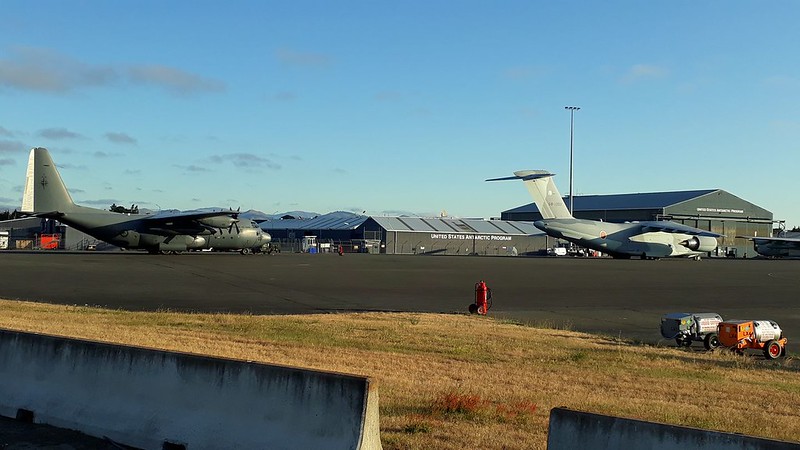That is sort of the thing though. Any fighters NZ might be inclined to purchase are going to either have high costs, or be of little use. The high costs might be upfront being modern, advanced aircraft, or older aircraft in need of upgrades, alternatively the higher costs could be on the backend being older but already upgraded aircraft that had been well used and have higher costs to safely sustain operations.
The other option would be even more unpalatable IMO, getting low-cost aircraft that lack modern avionics which would leave them unable to operate in a modern battlespace.
But this is not quite yet about operating in the modern battlespace - that is the point that needs to be recognised and digested.
It is about re-developing capability and extending training into modern air combat skill sets, with a view to being able to build capacity to get to an arbitrary point in time say 2030 years when we would then be able to operate and suceed in a future battlespace. This is about methodically building up to those operations over time.
Crawl - Walk - Run.
The new DefMin has seemingly proposed taking over the operation of some of the soon to be retired from RAAF service F/A-18AM's / BM's. "Some" is very likely to be a small tranche - which may mean an acquisition of less than 16-18 airframes - of which in effect may only be a short Squadron of 8-10 aircraft possibly generated and operational on the flight-line. Some kept in reserve and some cannabilised for attrition spares.
The new DefMin is possibly investigating what may follow after an interim period of using these aircraft - or possibly letting the next stage in capability evolve following a process of evaluating requirements for an introduction of a Gen 4++ or Gen 5 aircraft.
Since the inclination it seems is the F/A-18AM it is best to get official data on their costs.
According to the ANAO Audit Report No.6 2012–13, Management of Australia’s Air Combat Capability is estimated the cost of sustaining the fleet of 71 F/A-18's projected through their RAF retirement works out at an average of AUD $170m per annum for their remaining decade with the peak year of 2018/19 of AUD$214m or in effect AUD$3m per annum per platform to keep all 71 flying airworthy and a further operational outlay with the Hornet Deeper Maintenance costing $1.3m per aircraft per annum.
Thus it seems that it would cost on those figures circa NZ$5m a year for each aircraft. On top of that would go fuel, basing costs, salaries, basic stocks of weapons for training and qualification.
Another cost factor is the C+ SLEP at Cecil Field at USD$7.4m per refurbished airframe and mechanical overhaul, which would extend the aircraft's life out to 8000 hours.
What we also know about the F/A-18AM is that the fleet has now completed 336,000 flying hours since introduction and average around 29.5 years old. They evidently fly between 160-170 hours p.a and have an average of around 5000 hours on each existing airframe. All airframes will be retired short of the original manufacturers life-time estimate of 6000 hours.
We also know that the RAAF F/A-18AM's are fundamentally sound following their 2015 evaluation study and unlike USN/USMC aircraft have not had a life of carrier service and thus would be ideal candidates for a C+ SLEP upgrade.
Cost and usage also have contexts. The policy context here is in terms of being a pathway to redevelop a capability. That capability is a strategic hedge to evolving or potentially variable strategic circumstances. It will give us choices that we do not have at present if circumstances unravel.
Essentially this is no different to a proposal that McCully or Carter were shopping around pre 2005 election when Clarke was trying to offload them to Tactical Air Services -basically to keep 8 A-4K's flying to keep air combat skills in house (After Clark faux sold them to Hoss whatshisname McCully then wanted to have the RAAF base some Hornets at OH). Essentially it was to recreate the old No.2 Squadron (that was based in Nowra) back in action in OH.
My guess looking at the policy context announced by NZ First and the motivation of Mr Mark instead of using 8 A-4K's - he possibly is proposing 8-10 F/A-18's. Instead of maintaining nine Machi's iirc was the 2005 idea - a proposal would be to outsource LIFT to a lead provider such as the PPP UKMFTS joint venture at RAF Valley. Instead of buying them and shipping them home to OH immediately - keep them in Australia initially flying alongside the ones still with Roos stencilled on the side at the Hornet OCU and contributing pro-rata, and start rotating four airframes a year through a SLEP. Then when the Hornet OCU party is over in OZ head back to OH with a industry sustainment contract in place for the next 7-10 years and join the Singa's and
then start looking and thinking about finding the replacement that will have the job of operating in a modern battlespace within a post 2030 world.

